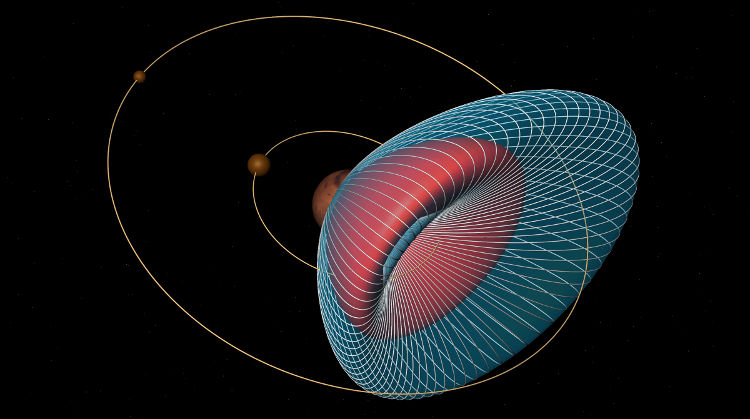
Purdue University scientists believe that a sample-return mission destined to reach the surface of the Martian moon Phobos could finally settle the issue as to whether life ever existed on the Red Planet.
The team believes that the moon is a lot easier to reach and return from than the actual planet, even though several Russian missions aimed at doing so have failed. RosCosmos appears to have an obsession with reaching the diminutive moon.
According to the experts, the mission would reveal whether or not basic lifeforms existed on our neighboring world over the past 10 million years or so. Several large asteroid impacts occurred during this interval, and they definitely caused ejecta plumes that cast material all the way to orbit.
Purdue distinguished Professor of Earth, Atmospheric and Planetary Sciences, and Physics and Aerospace Engineering, Jay Melosh, was the leader of a team of scientists commissioned by the NASA Planetary Protection Office (PPO) to determine the likelihood of Phobos containing Martian life.
Even though RosCosmos failed to send its Phobos-Grunt spacecraft to the Martian moon last year – the vehicle eventually crashed in the ocean – there is currently renewed interest in the moon. The topic will most likely rear its head as NASA discusses its future Mars Exploration Plans.
“We are talking little green microbes, not little green men. A sample from the moon Phobos, which is much easier to reach than the Red Planet itself, would almost surely contain Martian material blasted off from large asteroid impacts,” Melosh argues.
“If life on Mars exists or existed within the last 10 million years, a mission to Phobos could yield our first evidence of life beyond Earth,” he goes on to say. Experts have recently discussed such a spacecraft at the NASA Concepts and Approaches for Mars Exploration workshop.
Melosh's team calculated in their study that each 200-gram soil sample collected from Phobos could contain as much as 1/10th of a milligram of material that originated on the Martian surface.
An additional 50 milligrams could be accounted for by material ejected from our neighboring world's surface over the past 3.5 billion years.
“The time frames are important because it is thought that after 10 million years of exposure to the high levels of radiation on Phobos, any biologically active material would be destroyed,” adds the Purdue Hsu Lo Professor of Aeronautical and Astronautical Engineering, Kathleen Howell.
Via: Mission to Phobos Could Reveal Martian Life
Tidak ada komentar:
Posting Komentar